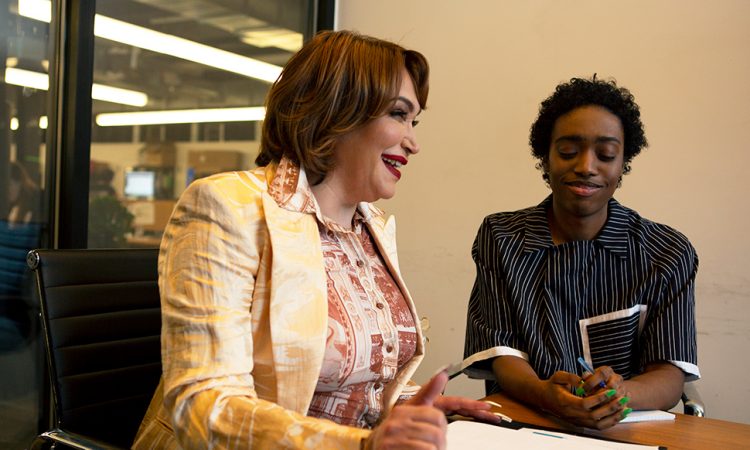How would you describe the afternoon sky if there were no word for the colour blue? You might talk about its vastness or explain the way it transforms as nighttime approaches. But eventually, you’d likely start to use comparisons. You might say it’s kind of the same colour as water or that it’s lighter in tone than the green grass. When you don’t have the right words at your disposal, descriptions can become long, winding and sometimes hard to get out. While this exercise might seem silly to some, it’s a familiar struggle for many queer and trans people who have gone through a lot of searching for the right words to describe who they are. When you grow up not being able to clearly articulate how you feel about gender and whom you’d like to form relationships with, finding a term like queer or pansexual or trans can be a very valuable discovery, since the English language was not developed with LGBTQ2+ people and relationships in mind.
Some terms are more well-known than others. That’s because those who have been able to fit in with the dominant (straight, cisgender) culture have always seen the advancement of their rights before others in the LGBTQ2+ community. That’s one of the reasons why in the 1970s you might have heard about the gay movement, then the gay and lesbian movement and then the LGBT movement later on. Today you’ll see LGBTQ2+ and even longer acronyms like LGBTQ2SIA. This changing acronym, which is not standardized by any organization or body, is reflective of how many different identities can be found in the community that some describe as SOGIESC: sexual orientation, gender identity, gender expression and sex characteristics. These are the grounds, as they appear in much human rights legislation, upon which many LGBTQ2+ people are discriminated against.

Just to make things interesting, LGBTQ2+ communities are also incredibly diverse in a variety of other ways. LGBTQ2+ people can be found in every country around the world, come from every racial background and practise many religions. LGBTQ2+ people are of all ages and live with many different kinds of disabilities. In fact, the Canadian Mental Health Association says that LGBTQ2+ people are at significantly higher risk for anxiety, depression and phobic disorders. This is often because of increased experiences with biphobic, homophobic and transphobic violence. LGBTQ2+ people face many challenges accessing safe housing, decent work and social services, often facing multiple barriers because of various dimensions of their identity. It’s important to keep these factors top of mind when learning how to engage with LGBTQ2+ people effectively.
“LGBTQ2+ communities are also incredibly diverse in a variety of other ways.”
To people who are just learning about LGBTQ2+ people and communities, all of the terms and phrases can be a mouthful – and a confusing one at that. But you don’t need to memorize definitions of hundreds of different sexual orientations, genders and qualifiers. You really just have to have an open mind and a willingness to practice your social skills. When you’re looking to connect with clients, students, employers, colleagues or others who are part of LGBTQ2+ communities, mirroring language is important. This involves paying attention to the information people provide about themselves and using the exact same language back to them, to reinforce that you heard and respect them. If a colleague who is a man refers to his spouse as “husband,” use that word when talking about his marriage. If someone introduces themselves with their name and offers that they use the pronouns “they” and “them,” use those pronouns when referring to them in the third person. When people provide these details about themselves, consider those tools you can use to build a stronger relationship with them.
It’s important to remember that everyone makes mistakes. While it’s not usually fun to hear that you’ve said the wrong thing, when people give you constructive feedback you have an opportunity to work on another skill: learning. Are you going to let the feedback ruin your day or are you going to accept it kindly and ask for help on how you can communicate better in the future? Messaging that you’re trying your best to say and do the right things, but that you’re still working on it is a great way of letting people know you need their help. Remember that some folks have searched far and wide for just the right term to describe who they are or who they love. They also might be dealing with additional challenges you’re not aware of, because of other parts of their identity. Just keep your cool and show them that you genuinely care about improving. It’ll go a long way. In the Rainbow Flag, the unofficial symbol of LGBTQ2+ pride, the colour blue represents serenity. So take a deep breath, think of the afternoon sky and stay calm. You’ll find the right words eventually.
Want the best of CareerWise delivered to your inbox each week? Subscribe to our popular CareerWise Weekly newsletter to receive top news and views in career development every Tuesday.




